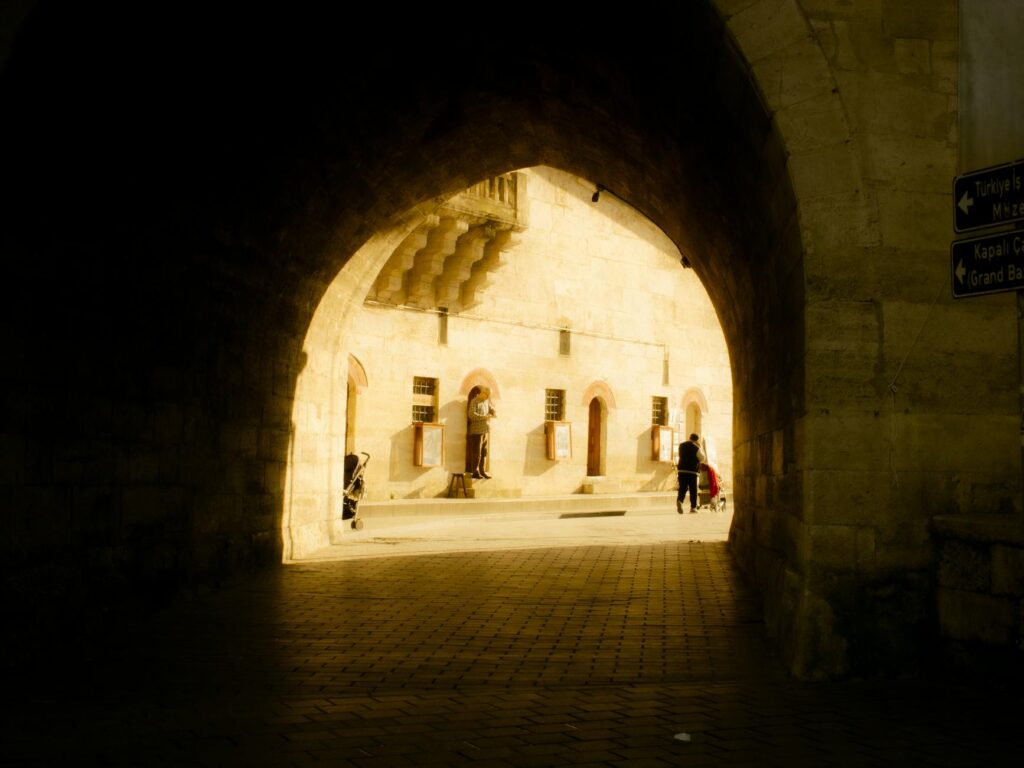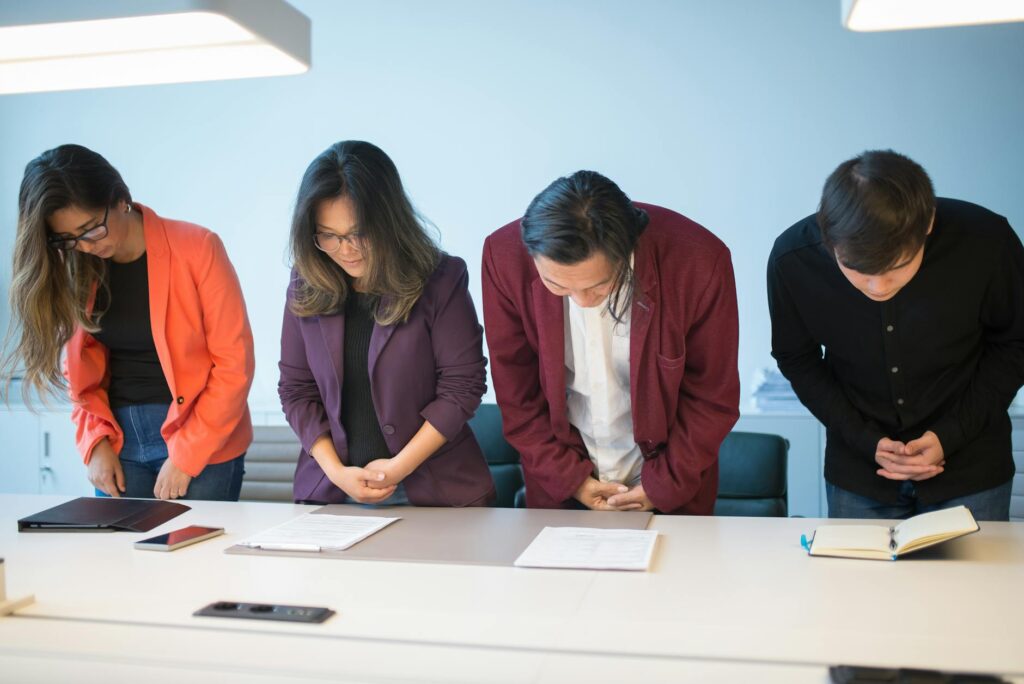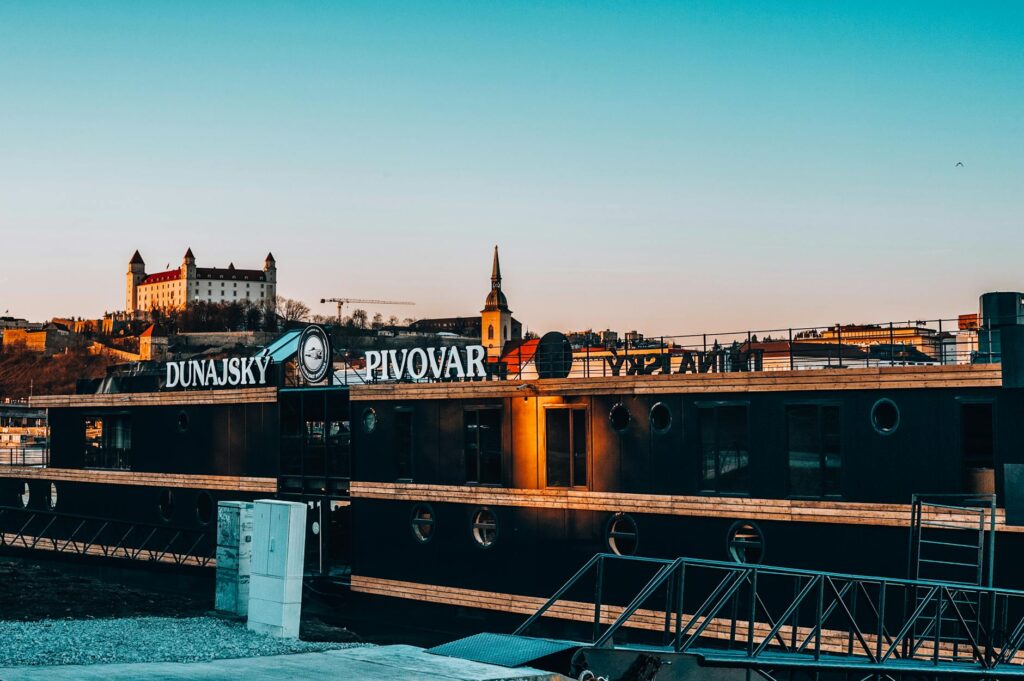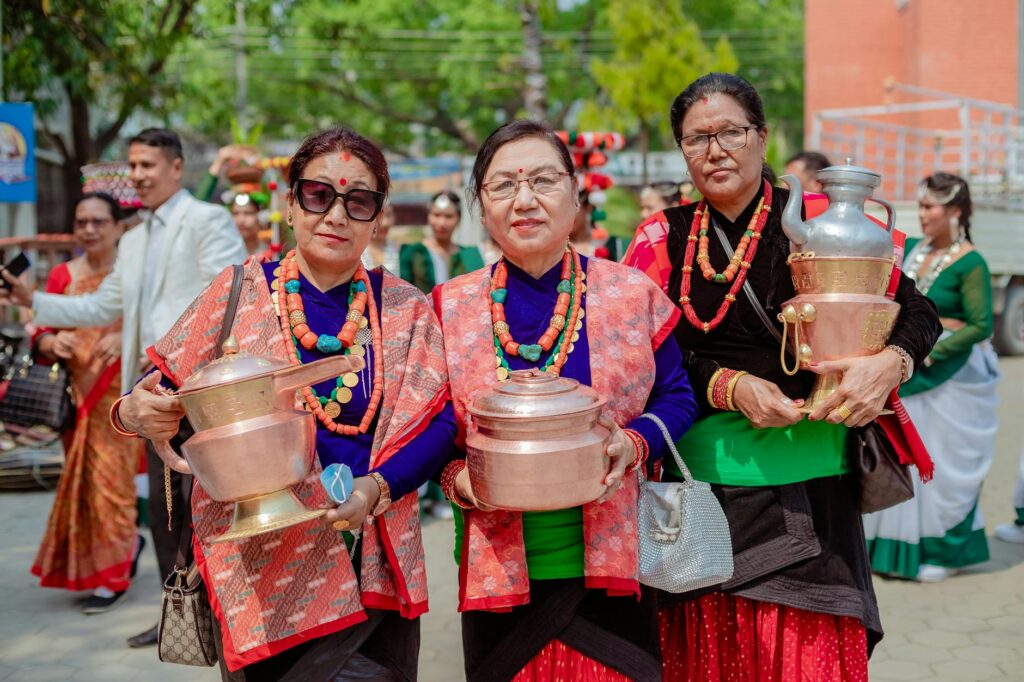Traveling through Central and Eastern Europe offers unique experiences. Each country has its own customs, and missing them can create awkward moments. Understanding these cultural differences helps you connect and shows respect for your destinations.
I’ve discovered that small gestures often hold great significance. Dining etiquette and everyday conversations vary greatly across different cultures. Ignoring these customs can lead to misunderstandings or even offend locals.
Here are some common cultural pitfalls to avoid:
- Don’t assume everyone speaks English
- Avoid loud talking in public spaces
- Wait for the host to start the meal
- Always greet with a handshake
- Respect personal space
- Don’t interrupt when someone is speaking
- Be mindful of local tipping practices
- Know local customs for gift-giving
- Avoid discussing politics or history
- Dress appropriately for religious sites
Use these tips to enjoy your travels. Imagine exploring Prague or Budapest, soaking in the sights. Connect with locals and share stories over a meal. Understanding cultural differences enriches your experience. Ready to learn more?
Importance of Cultural Sensitivity
Cultural sensitivity matters in Central and Eastern Europe. Knowing local customs enriches your experience and builds friendships. Small acts of kindness create lasting connections. Engaging with traditions enhances your travel.
Building Connections with Locals
Understanding cultural differences builds strong relationships. Showing respect to locals makes conversations easier. Simple acts like greeting in their language or following dining customs can create a warm connection.
- Smile and Greet: A friendly smile and a “hello” can brighten anyone’s day.
- Ask Questions: Show genuine interest in local traditions.
- Respect Boundaries: Every culture has its limits; be aware and adapt.
Through these small actions, I often find myself invited to local gatherings or recommended hidden gems off the typical tourist path. These connections not only provide insight into their way of life but also create lasting memories.
Avoiding Misunderstandings
Knowing local customs helps avoid awkward moments. Each area in Central and Eastern Europe has its own unique traits. For example, understanding dining rules in Hungary and greetings in Poland can prevent embarrassing situations.
- Dining Etiquette: Avoid starting to eat before the host.
- Gestures Matter: What’s acceptable in one country might offend in another.
- Social Norms: Familiarize yourself with local norms like eye contact during conversations.
I approach interactions with a clear mind, avoiding mistakes. This helps me feel confident and engaged. Each trip teaches me something new, expanding my view and enhancing my travels.

Common Faux Pas in Greetings
Greeting customs in Central and Eastern Europe vary widely. A proper handshake and respecting personal space can make or break connections. Understanding these can help avoid awkward situations.
The Wrong Handshake
Handshake etiquette shapes first impressions. A weak or too strong handshake can influence the interaction. In Central and Eastern Europe, a handshake shows respect and should be firm without being aggressive.
Here are a few tips to keep in mind:
- Eye Contact: Making eye contact during a handshake signifies confidence and sincerity.
- Follow Local Customs: There might be specific customs, like a double handshake in Slavic countries.
- Use Right Timing: It’s customary to greet everyone in the room with a handshake when entering.
Never underestimate the power of a good handshake. If I don’t adhere to these basics, I risk coming off as impolite or uninterested.

Ignoring Personal Space
Personal space can vary significantly from one culture to another. In Central and Eastern Europe, people usually maintain a comfortable amount of space while conversing. Getting too close can feel intrusive and lead to discomfort.
Here’s what I’ve learned about personal space expectations:
- Cultural Variability: In countries like Poland and Hungary, a little distance is preferred, while Southern European countries might stand closer.
- Observation is Key: Pay attention to how locals interact. Mimicking their distance can help me gauge acceptable space.
- Adjust Accordingly: If a local steps back, it’s best to follow suit.
Being mindful of personal space can make or break an initial interaction. Respecting these boundaries shows that I value the comfort of those I’m engaging with.
Dining Etiquette To Remember
Dining customs vary widely across Central and Eastern Europe, and being aware of these differences can make me feel more at home during meals. Each country has unique traditions that reflect its culture, which can be charming and enlightening.
Table Manners Varies By Country
Understanding table manners is essential when enjoying a meal in different countries. For example:
- Poland: It’s polite to wait until everyone is served before starting to eat. Leaving food on the plate might be seen as wasteful.
- Hungary: I learned that placing my hands on the table (but not my elbows) is considered appropriate. Also, saying “Jó étvágyat” (Enjoy your meal) before digging in is a common courtesy.
- Czech Republic: Here, it’s customary to toast with eye contact. They say “Na zdraví,” and I found it adds a special touch to the dining experience.
- Slovakia: People often wait until the host begins eating. It’s also polite to keep hands on the table instead of laps.
These practices might seem small, but they speak volumes about respect and appreciation for local customs. When I followed these dining etiquettes, I felt more connected to the people and culture.

Accepting Food and Drink
When offered food or drink, I discovered that how I accept or refuse can significantly impact local relationships. Accepting with grace shows respect. Here are some insights into this process:
- Saying Yes: In many Central and Eastern European cultures, accepting food or drink is seen as a way to bond. A simple smile and a gracious “thank you” will go a long way.
- Refusing Politely: If I need to decline, I’ve found that saying something like “I’m so full, but thank you” works well. This lets hosts know I appreciate their offer while respecting my limits.
- Joining the Toast: When offered a drink, participating in a toast is vital, especially in countries like Hungary and Slovakia. A simple “cheers” while making eye contact is a lovely touch.
Understanding how to navigate food and drink offers enhances my experiences. It helps me build rapport with locals and gives me an authentic taste of the culture.
Understanding Gestures And Body Language
Gestures and body language are important in communication. They show feelings and attitudes without words. In Central and Eastern Europe, gestures vary widely. Each movement means something different in each culture. Knowing these differences helps connect with locals. Let’s explore some gestures and what to avoid.
The Meaning Behind Gestures
Gestures can mean different things in different places. A thumbs-up shows approval in the West but can offend in Greece. Waving is friendly, while an open palm can be negative. Knowing these differences helps when talking to locals.
- Nods and Shakes: A nod usually means “yes,” while a shake means “no.” However, in some cultures, a nod can indicate understanding rather than agreement.
- Hand Signals: Open hands can suggest honesty, while pointing can be rude. It’s best to avoid pointing directly at people.
- Facial Expressions: A smile generally conveys friendliness, but in some cultures, it might signal embarrassment or discomfort.
Every culture has its own rules for gestures, so staying aware is important. I find that watching locals and copying their body language helps me fit in and builds connection.

What To Avoid Doing
While understanding gestures can foster connection, missteps can lead to confusion or even offense. There are specific gestures to avoid when traveling in Central and Eastern Europe:
- The “V” Sign: With the palm facing inwards, this sign is offensive in the UK and other parts of Europe.
- Fingers Crossed: While considered a lucky gesture in many cultures, in some Eastern European nations, it’s a sign of bad luck or disrespect.
- Slapping the Arm: This can come across as aggressive or disrespectful, especially in formal settings.
Avoiding these gestures not only shows cultural sensitivity but also enhances my interactions with locals. Being mindful of how I carry myself can transform potentially awkward moments into opportunities for understanding and connection.
Grasping the significance of gestures and body language has enriched my travel experiences. With heightened awareness, I feel better equipped to navigate communications in new settings, enabling smoother interactions and more enjoyable encounters with locals.
Researching Local Customs
Knowing local customs is key for a true Central and Eastern European experience. Each country has its own traditions and social norms. Understanding these helps me connect with locals and enjoy my trip more. I use resources and engage with the community to do this well.
Useful Resources For Travelers
Finding reliable information about local customs can feel overwhelming. However, numerous resources can help me educate myself before stepping foot in a new country. Here are some top places to gather insights:
- Travel Guides: Books from renowned brands often include sections on etiquette and customs. They provide comprehensive information on what to expect.
- Online Forums and Communities: Websites like Reddit or travel-centric platforms allow me to ask questions directly. Local travelers and expats often share valuable tips and advice.
- Social Media: I love browsing Instagram and Facebook groups where locals share their culture. This helps me get a visual understanding of customs and expectations.
These resources ease my worries when facing new cultural experiences. The more I know, the more comfortable I feel engaging with locals.
Connecting With The Community
Engaging with locals is one of the most fulfilling aspects of travel. Here are some ways I connect with communities while immersing myself in their customs:
- Attend Local Events: Participating in festivals and markets gives me a firsthand look at traditions in action. Plus, it’s a great way to meet people!
- Join Workshops or Classes: Learning traditional crafts or culinary skills gives me insight into the culture and opens doors for interaction. It’s often a fun way to break the ice.
- Be Open and Approachable: Smiling and making eye contact encourages locals to engage with me. A little warmth can go a long way in fostering connections.
Connecting with the community not only helps me understand their way of life but also builds lasting memories and friendships. The more I interact, the richer my travel experience becomes.

Maximize Your Travel Experience
Traveling in Central and Eastern Europe is amazing, but planning can be tricky. To find great flight deals, useFaredrop. It’s my top choice for affordable flights that fit my budget. Whether you’re seasoned or a newbie, this tool helps make your trips cheaper.
By using Faredrop, I’ve managed to save hundreds of dollars on flights, leaving me with more to spend on cultural experiences like dining, local tours, and souvenirs. It’s an essential travel companion, so don’t miss out!
Key Takeaways and Next Steps
Traveling through Central and Eastern Europe requires cultural awareness. Simple gestures can either build or break connections.
Respecting local customs in greetings, dining, and body language leads to memorable experiences. Each interaction is a chance to dive into the culture.
Next steps:
- Research local customs ahead of time
- Practice common greetings
- Be mindful of dining etiquette
- Observe body language cues
- Stay open to new experiences
Every traveler should make the effort to understand each destination’s unique customs. This approach enhances connections and makes trips more rewarding.






12 Responses
Hey TouristTales, great piece on cultural sensitivity! Always makes me think twice about how I approach new places. The part about dining etiquette really hits home – once had a major faux pas in Italy when I didn’t finish my plate. Turns out, it signaled I didn’t enjoy the meal…who knew!
This was an insightful read. Could you provide more examples of common faux pas in greetings? I’m often in new countries for work and dread accidentally offending someone during the first meet.
JennyB, always start with a smile and wait for them to initiate a handshake or another greeting. It’s a safe bet in most places.
really enjoyed the part about gestures and body language. its something not many think about but so crucial. thanks TouristTales!
Ha, the wrong handshake part! Been there, done that. Ended up fist bumping when I should’ve bowed. Awkward but a good icebreaker in the end.
Your section on researching local customs resonated with me. There’s nothing like connecting with the community to enrich travel experiences. Makes each journey unforgettable.
I found the segment on understanding gestures especially informative. Are there any universal gestures that are usually safe to use, or is it entirely dependent on the cultural context?
A very important article for anyone working in a global environment to read. Emphasizing the importance of cultural sensitivity can not be overstated. It’s vital in avoiding misunderstandings and building trust. Could you expand on how to deal with unintentionally offending someone in a foreign culture?
LindafromHR, this is such an excellent point. Understanding the pathway to making amends is as crucial as avoiding the faux pas in the first place.
Love this guide! The dining etiquette section is gold. Gonna share this with my followers.
Great article! I’m curious about how cultural sensitivity practices can be aligned with sustainable travel. Any thoughts?
Absolutely adored reading about the gestures and body language. As a performing artist, I find the unspoken language of movements fascinating. It’s a beautiful way to communicate across cultural barriers. Would love to see more on non-verbal cues in different cultures!